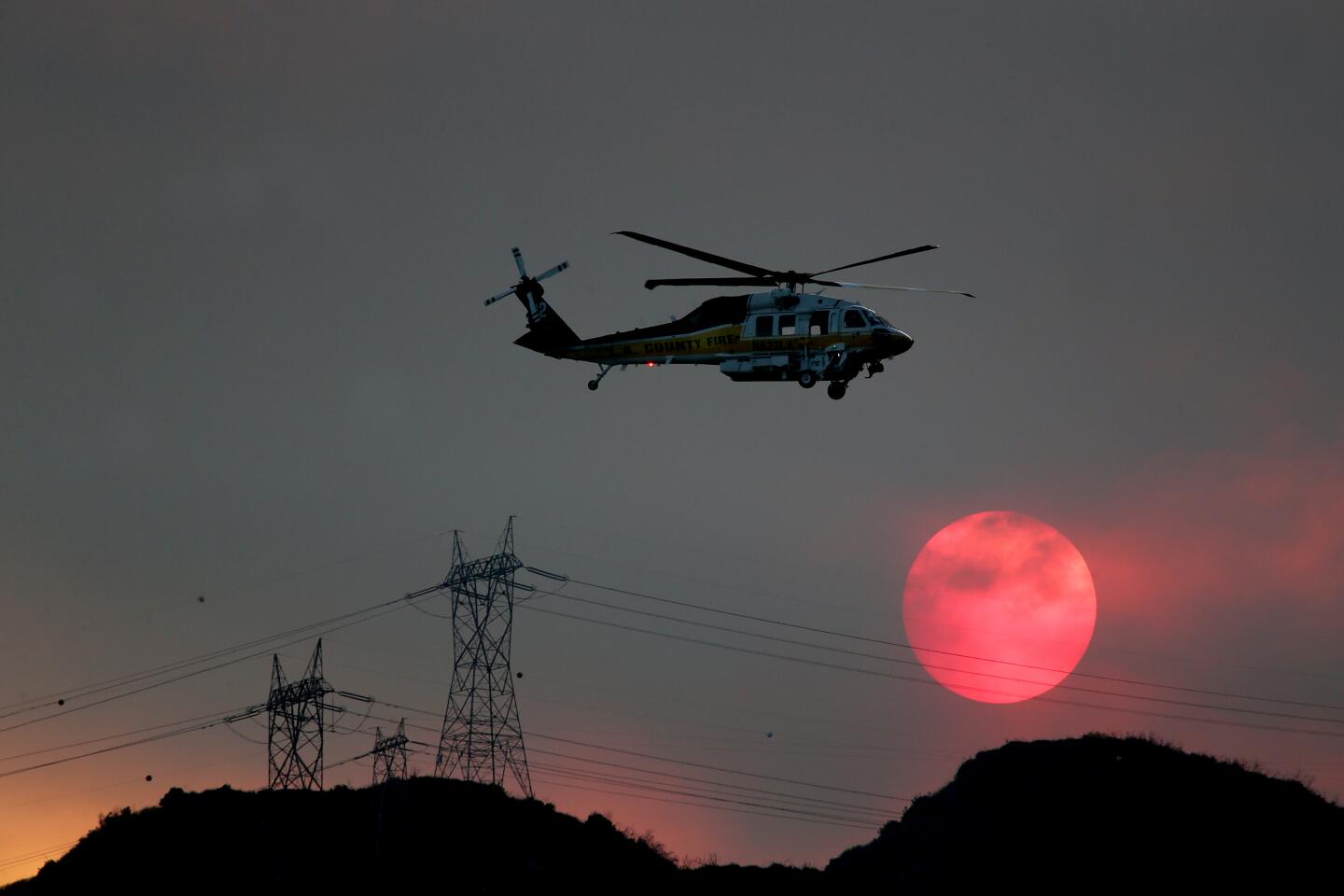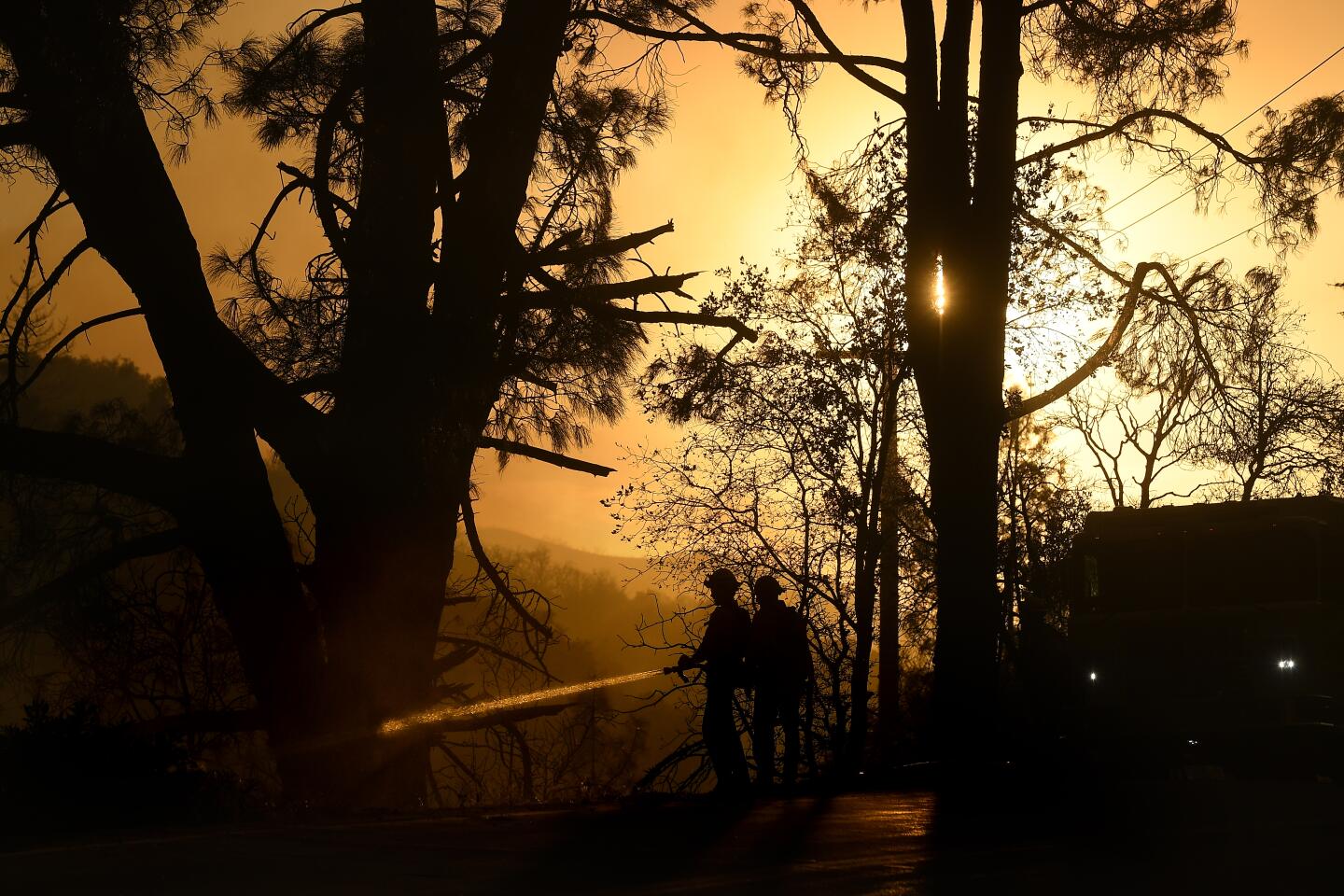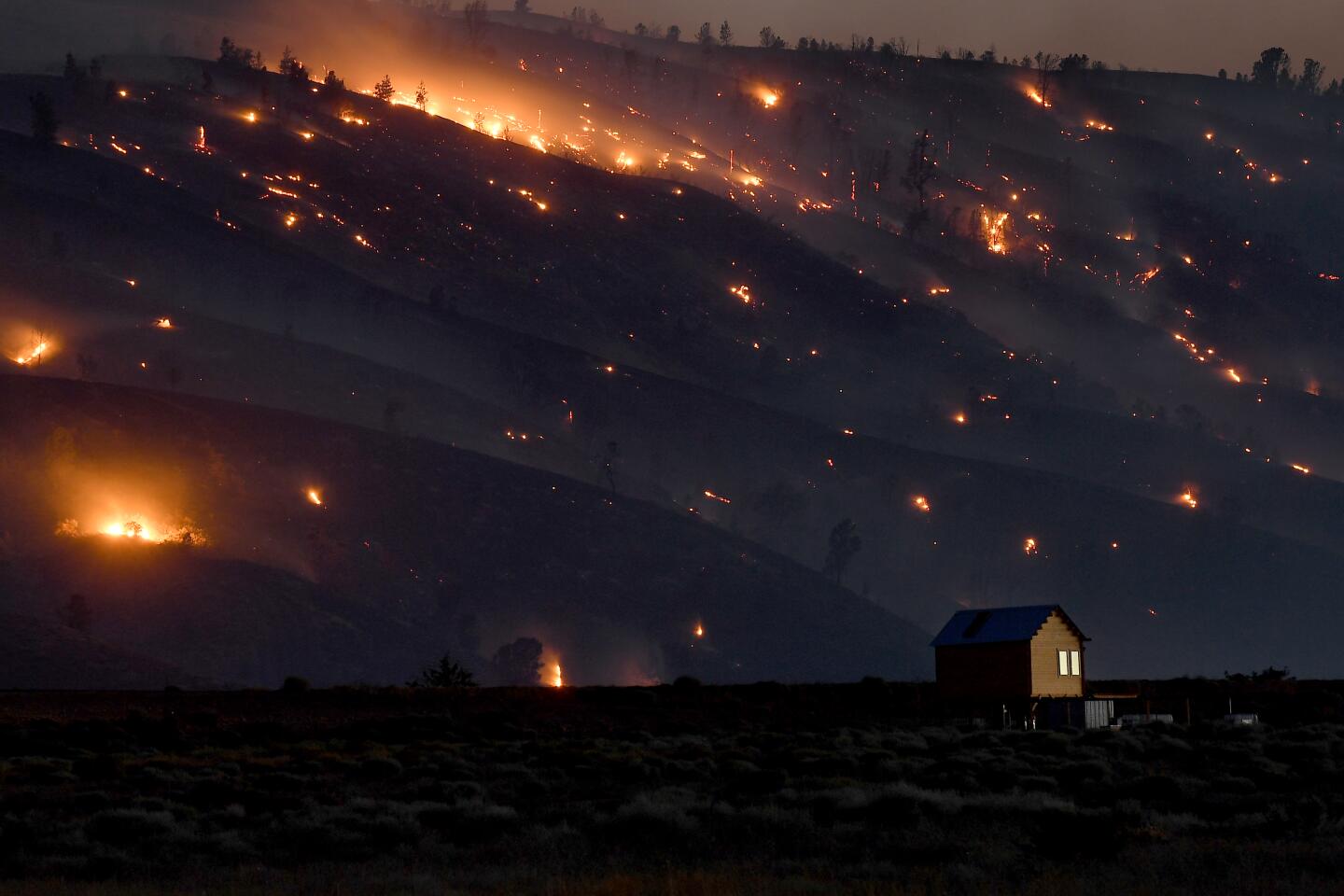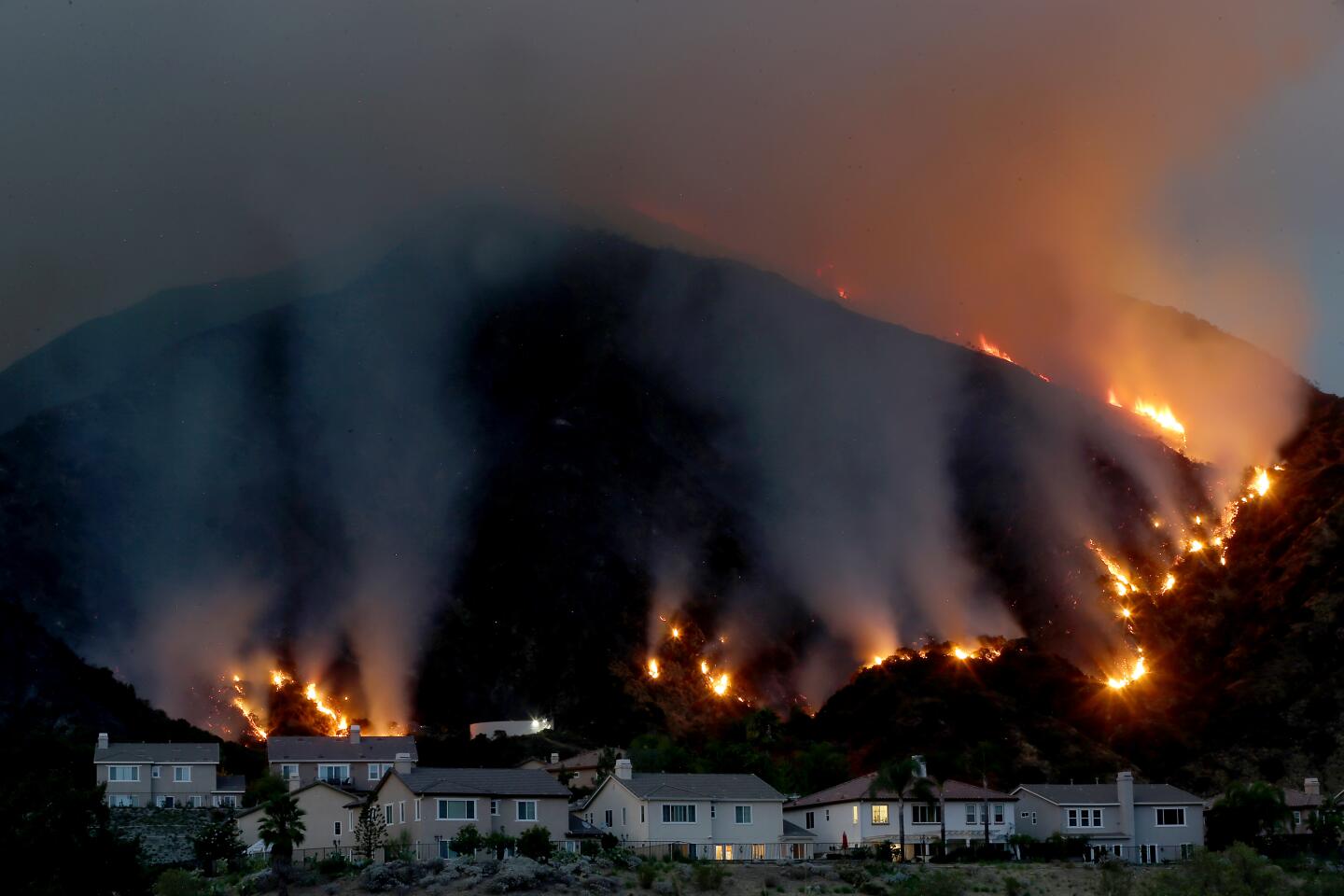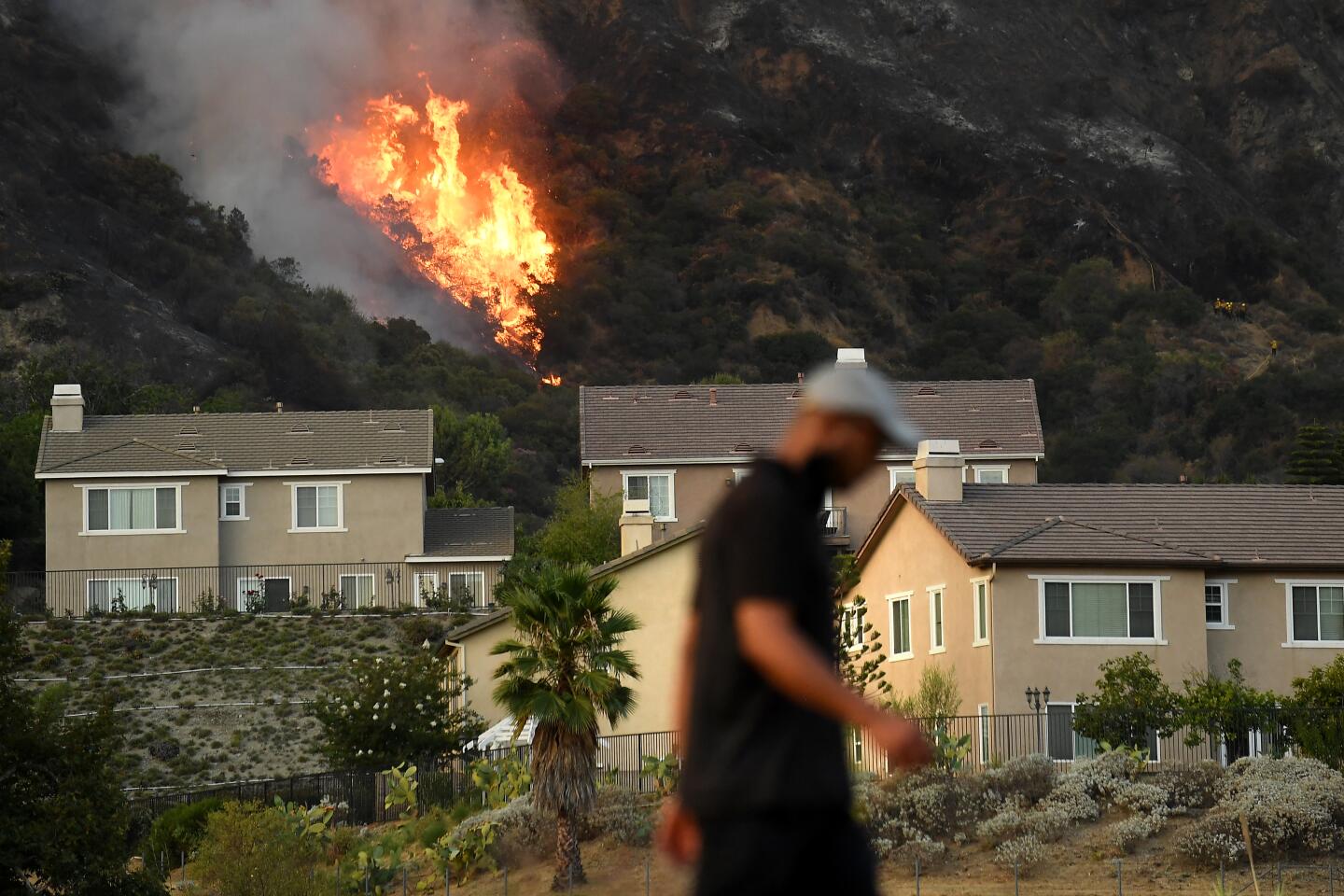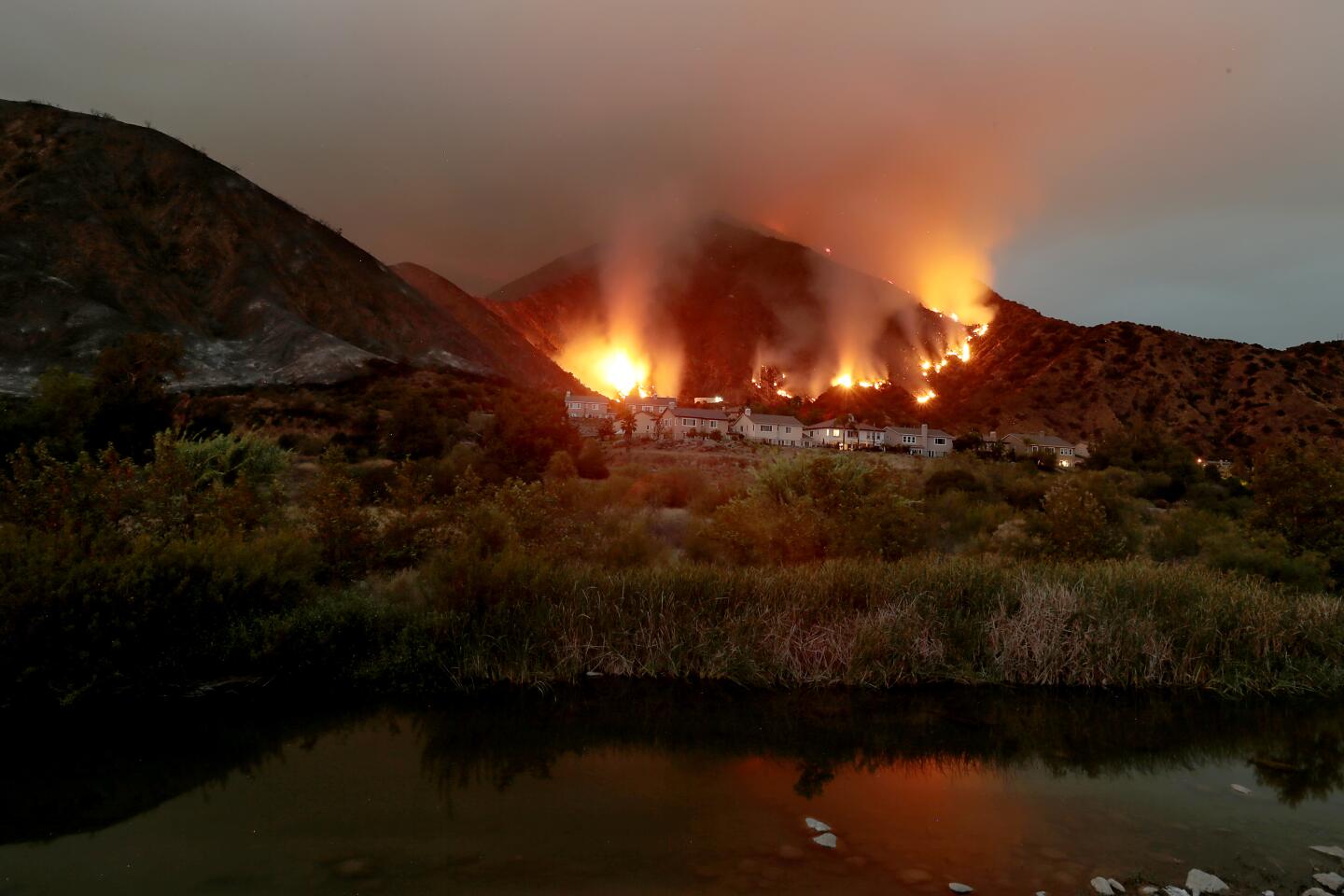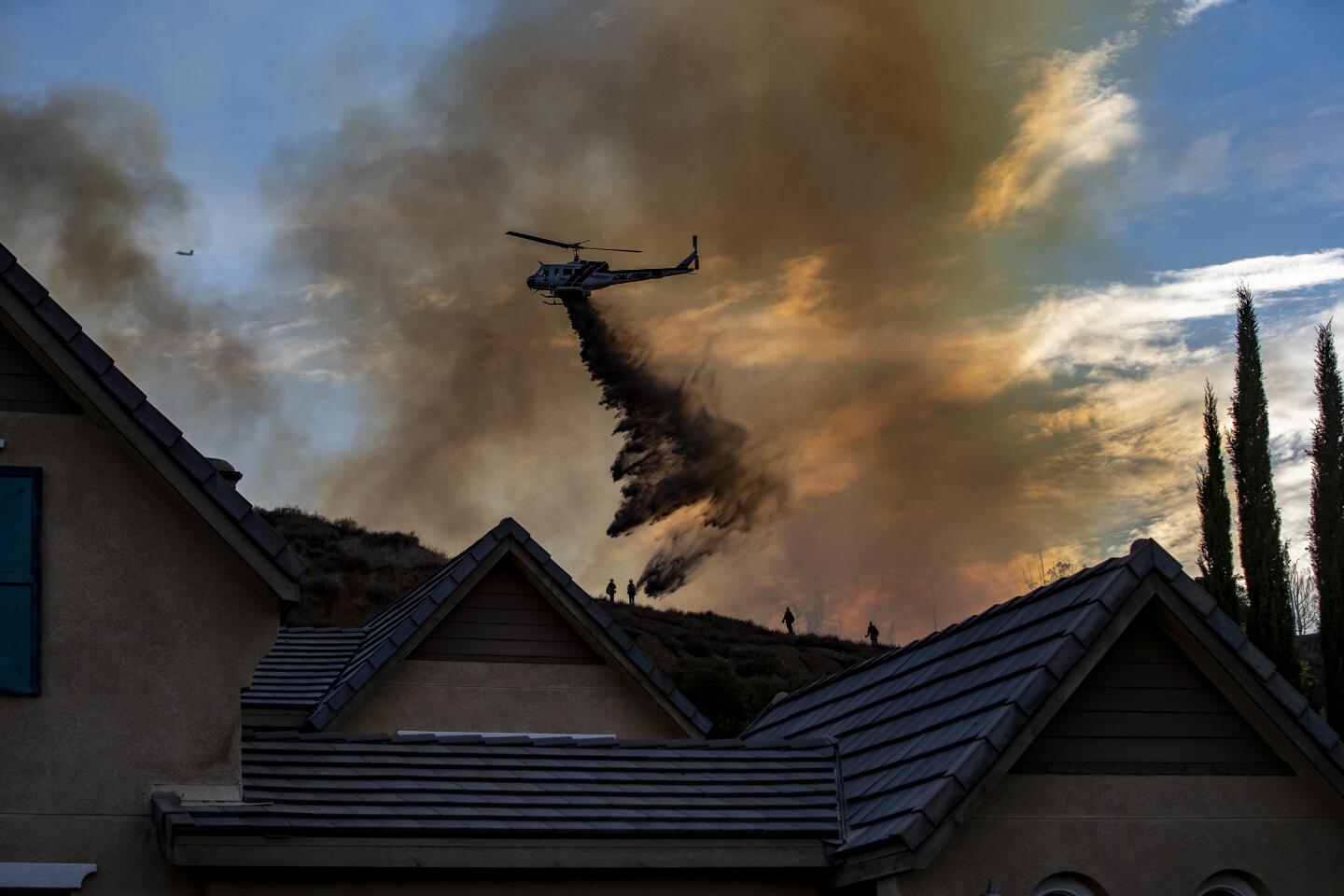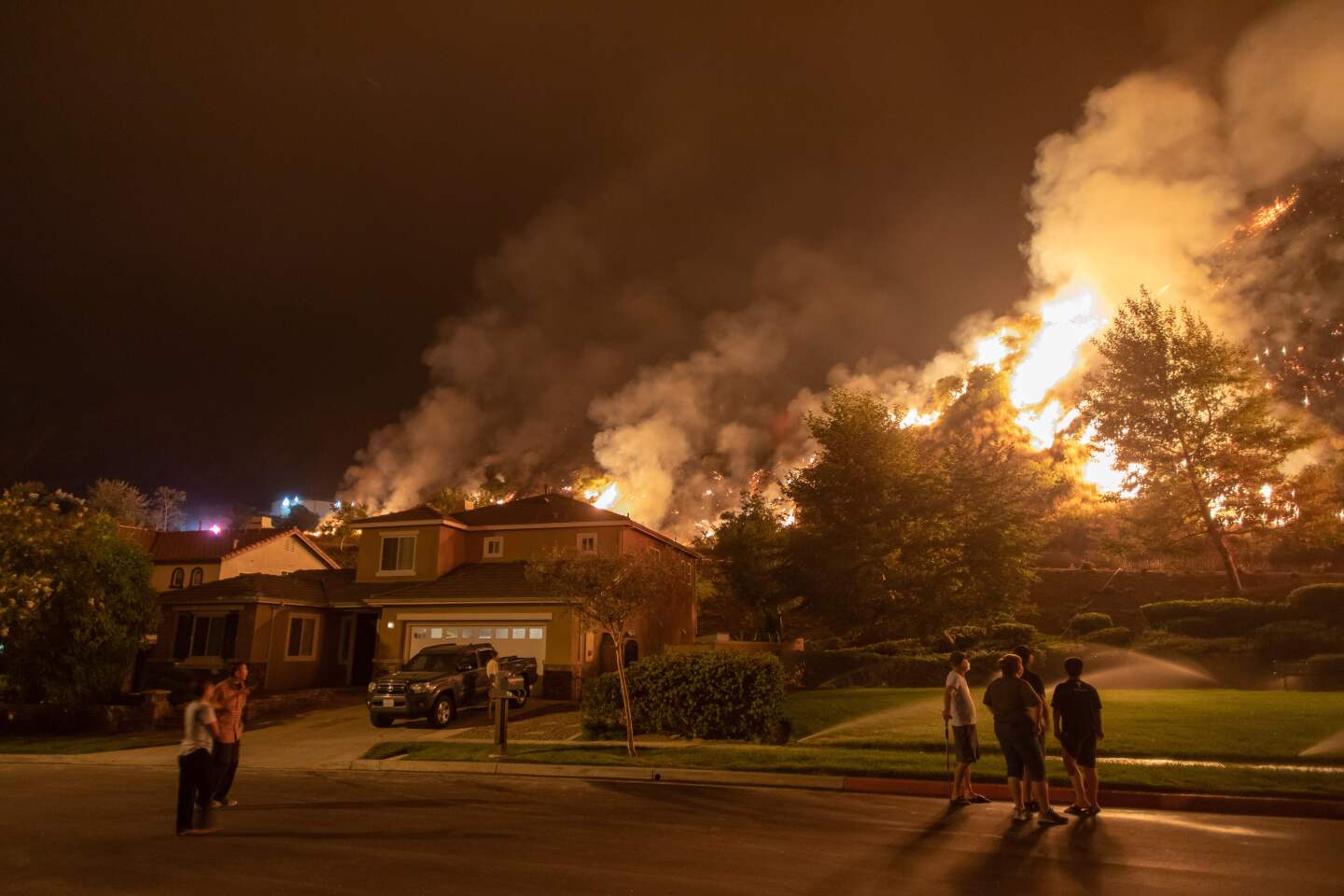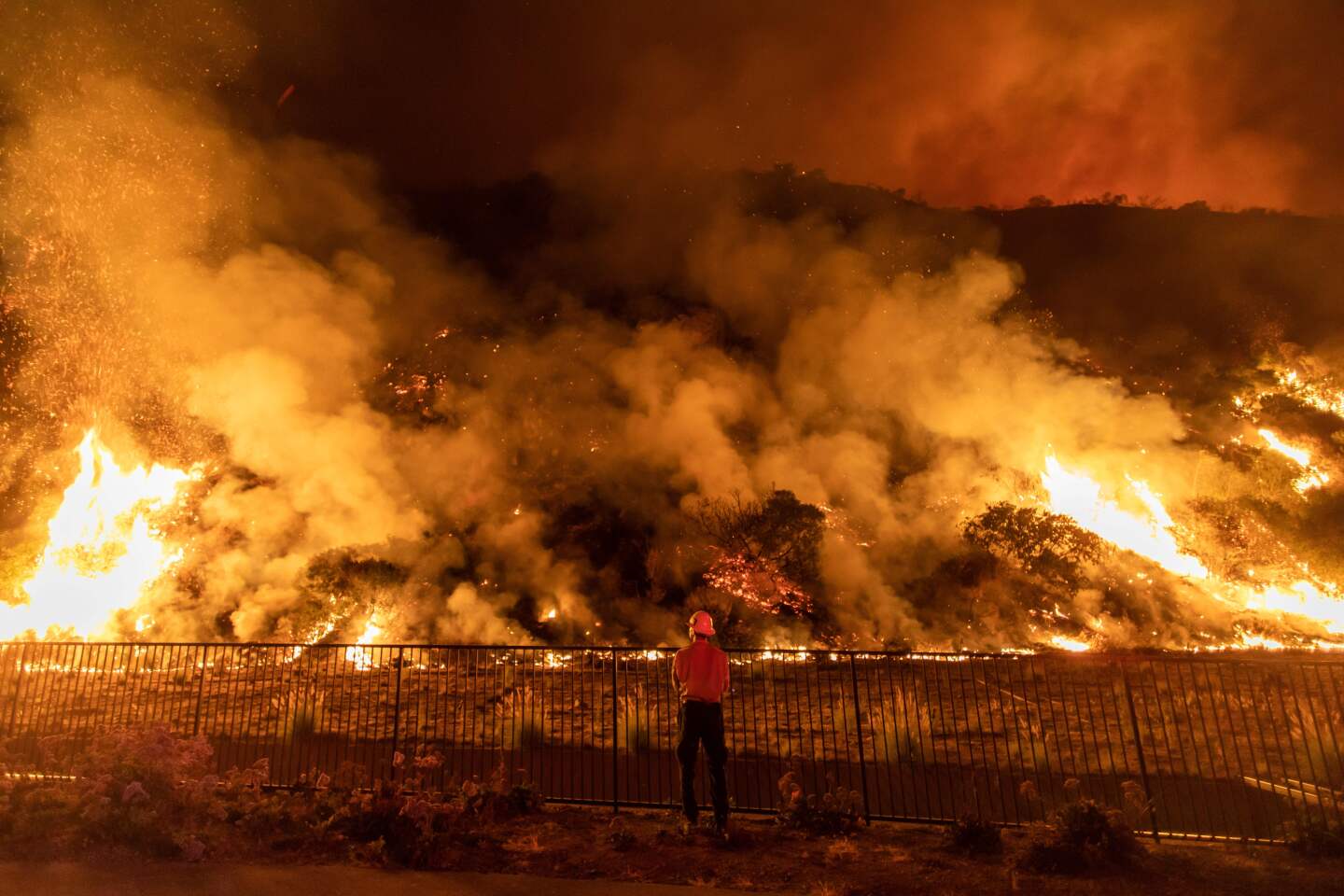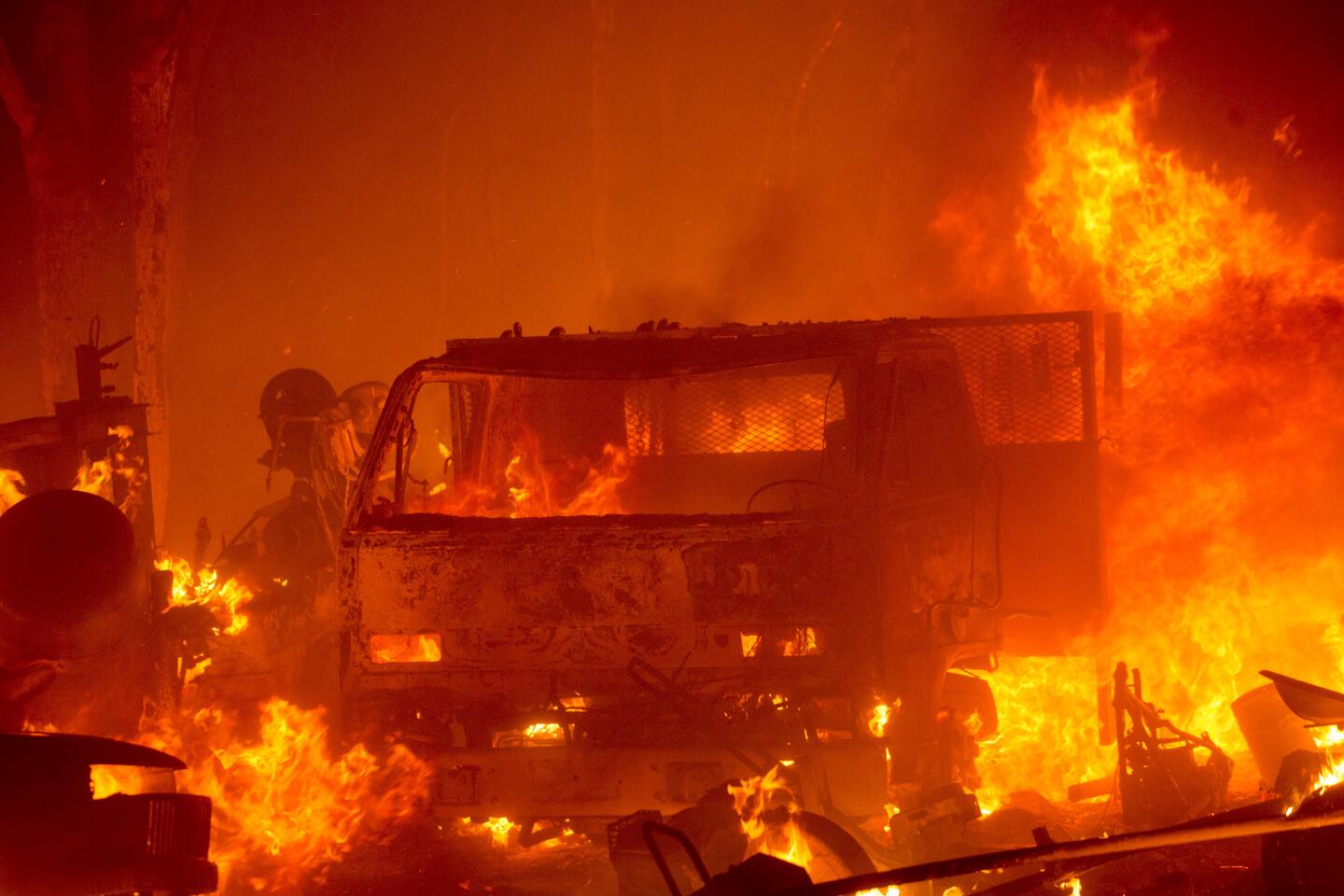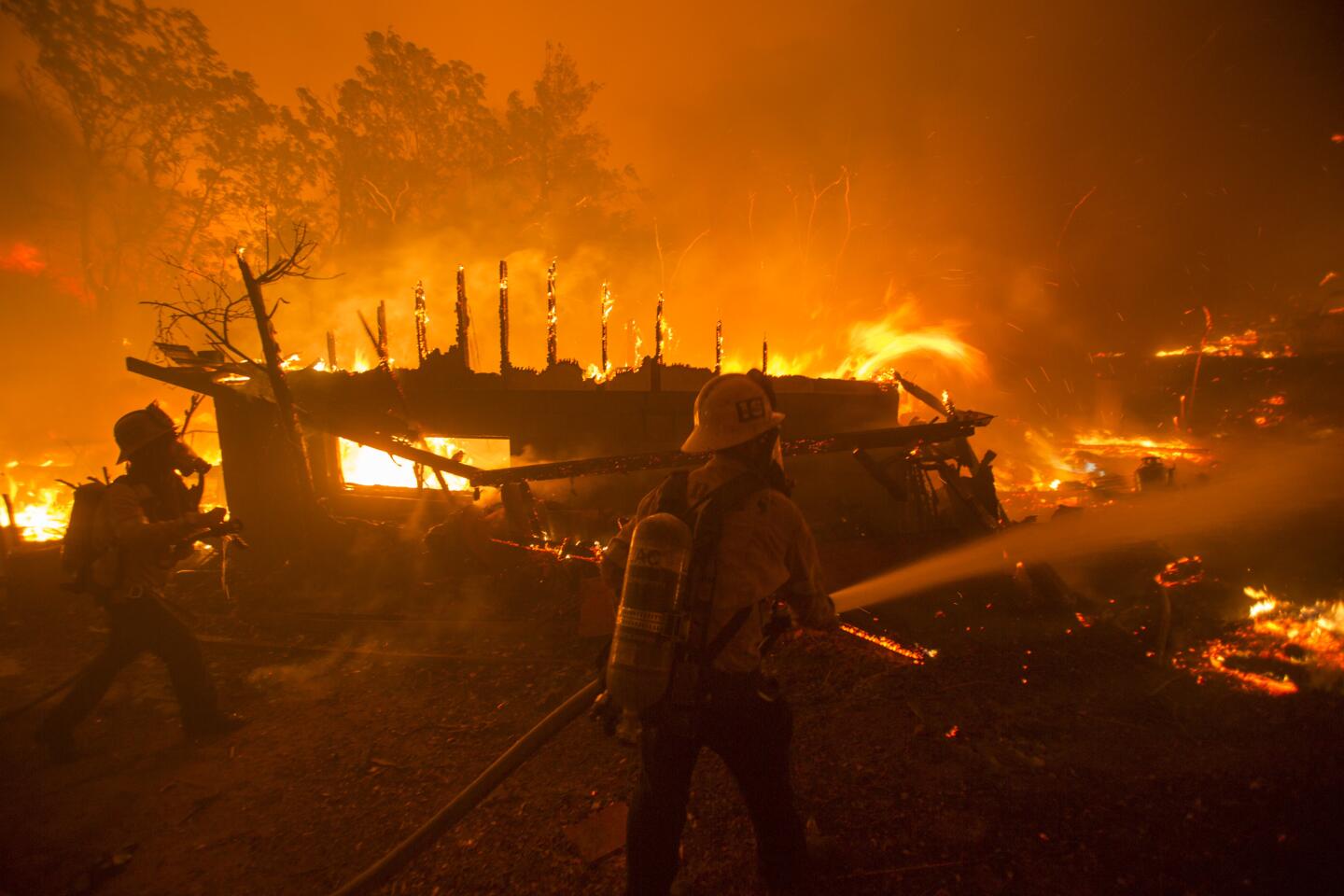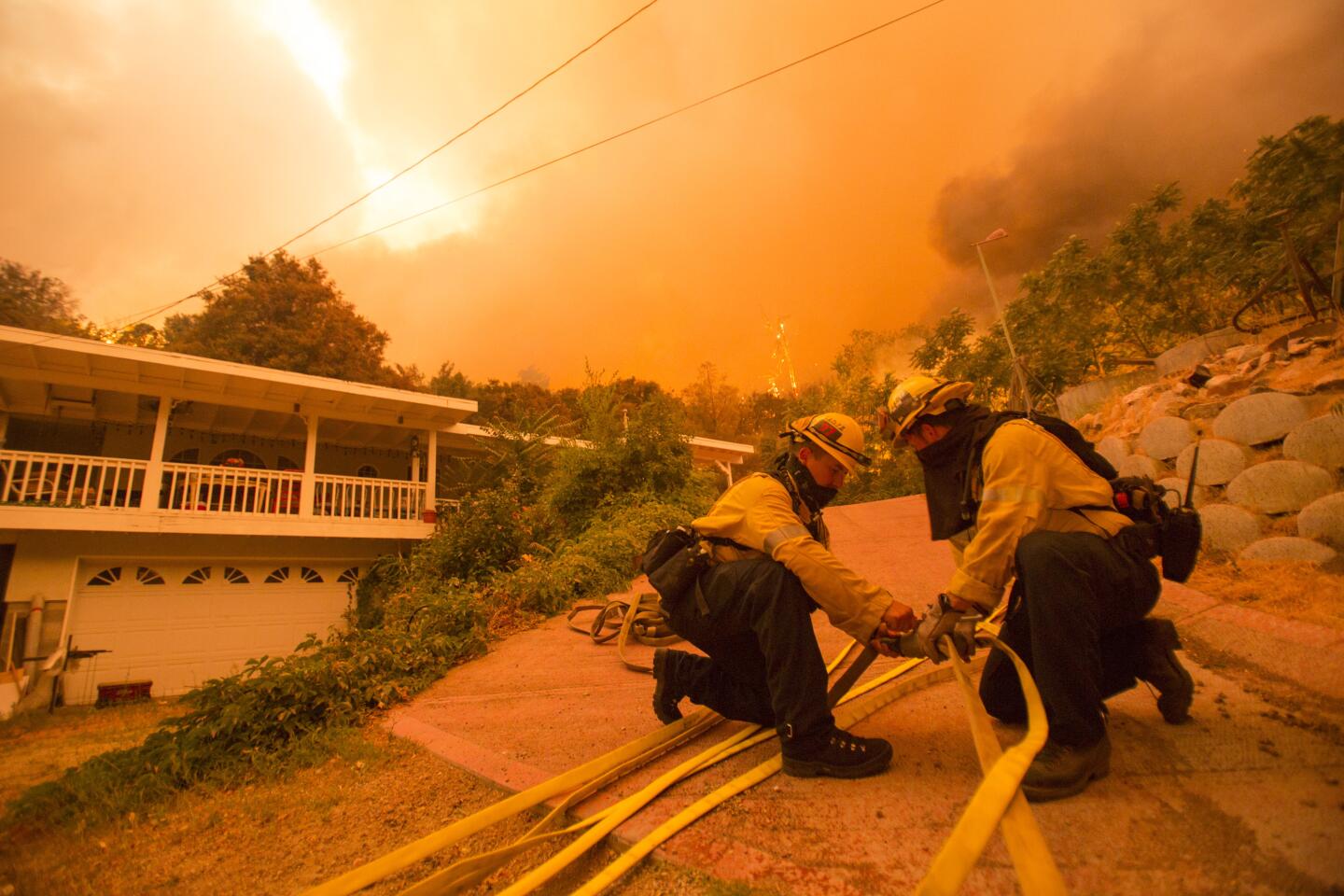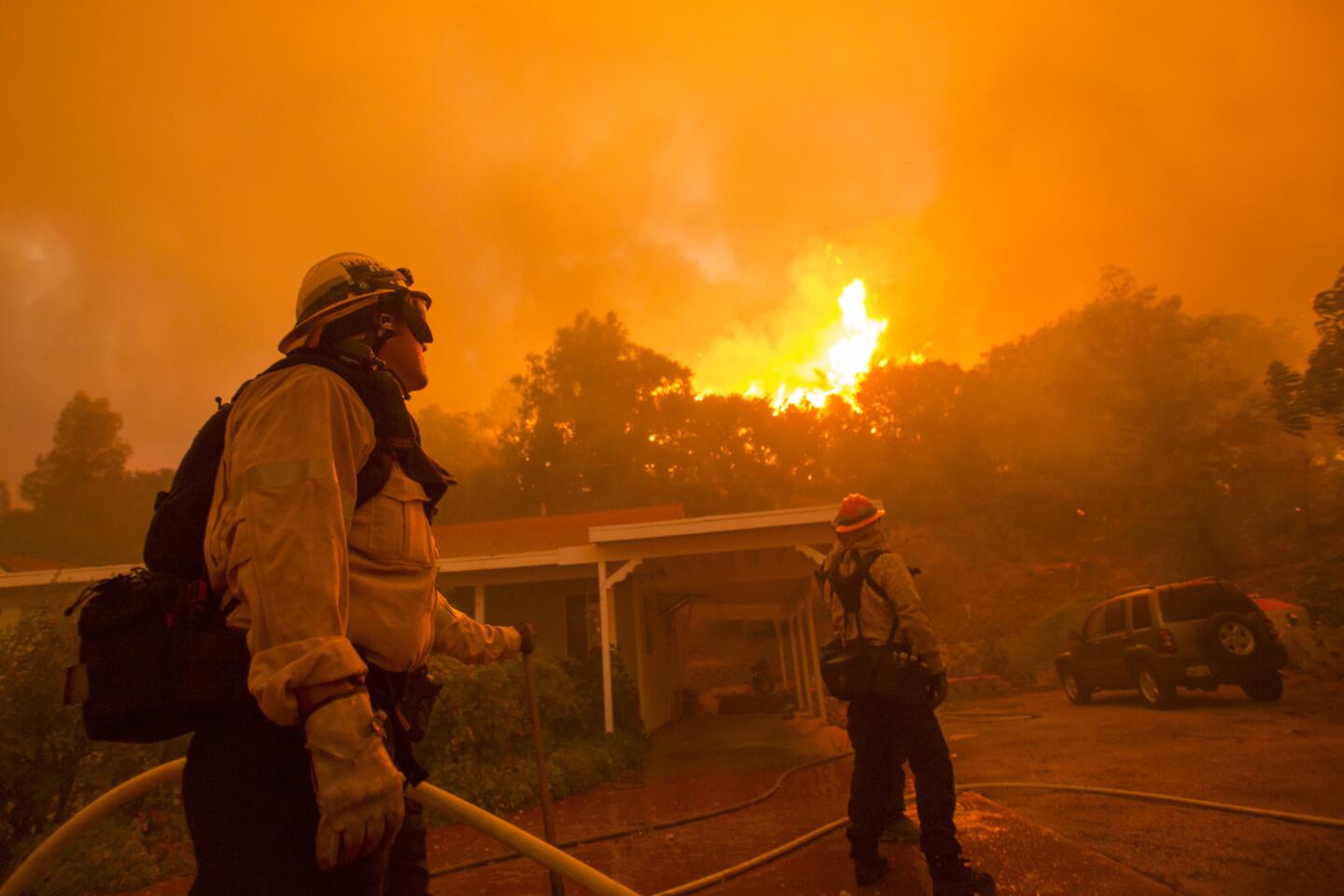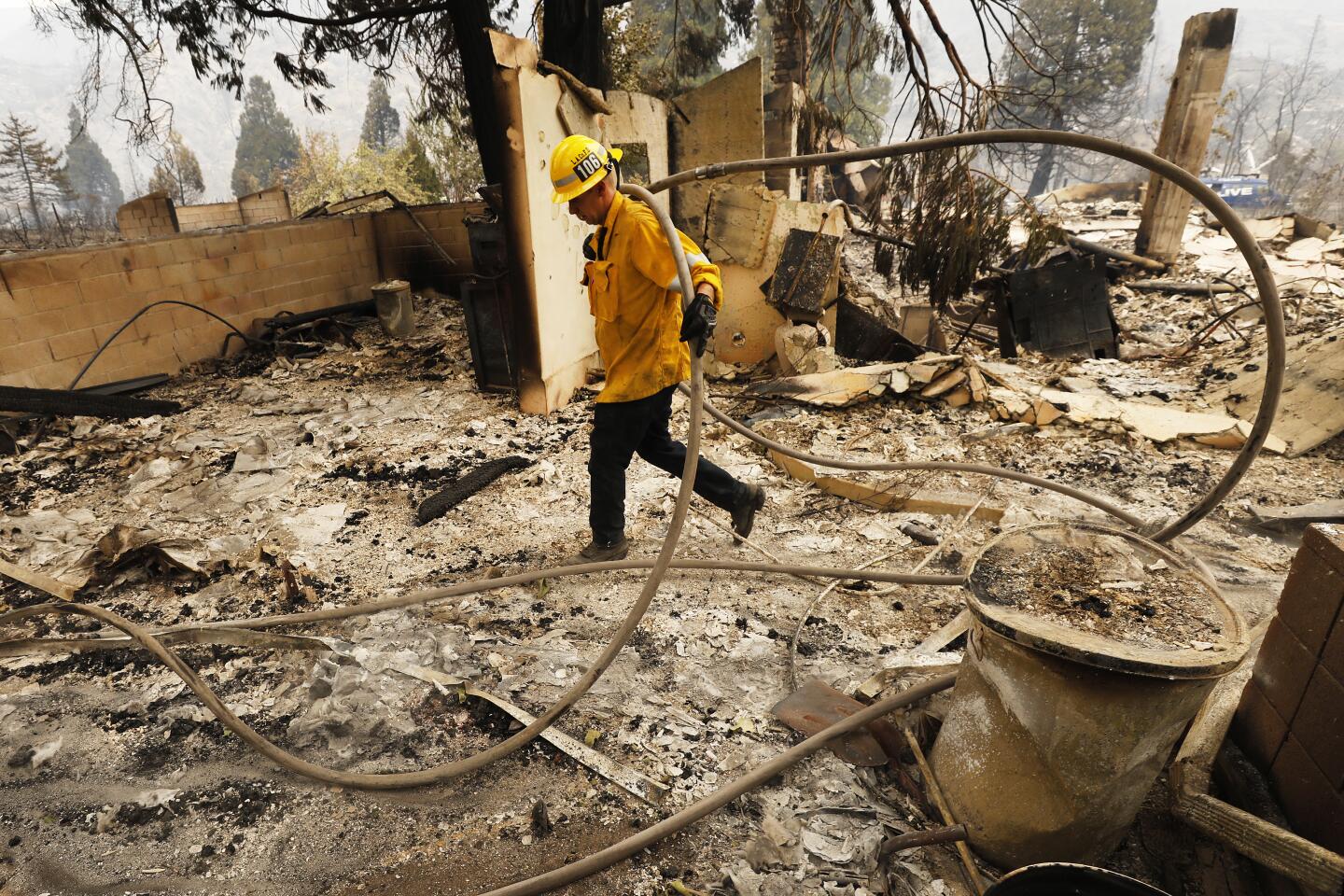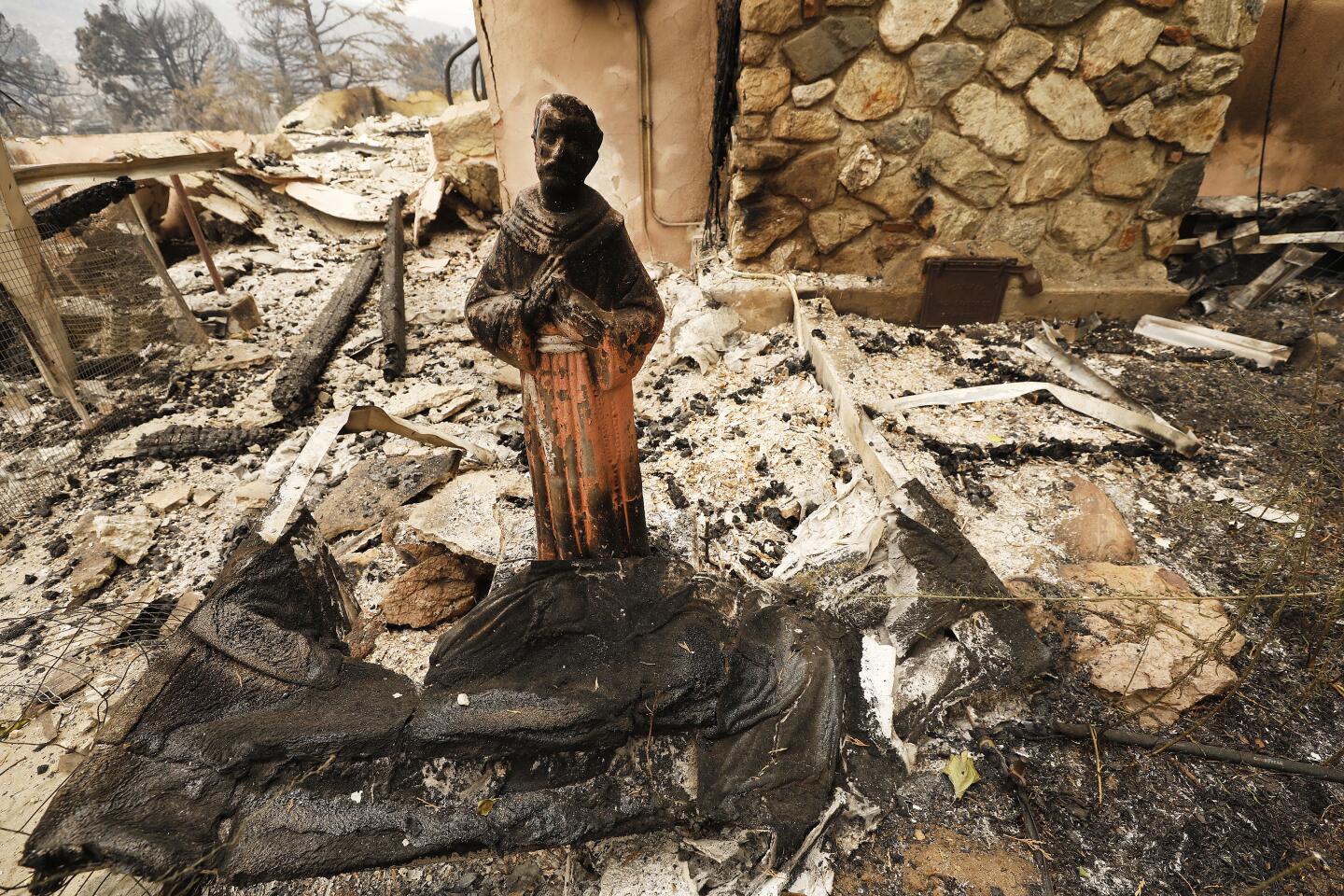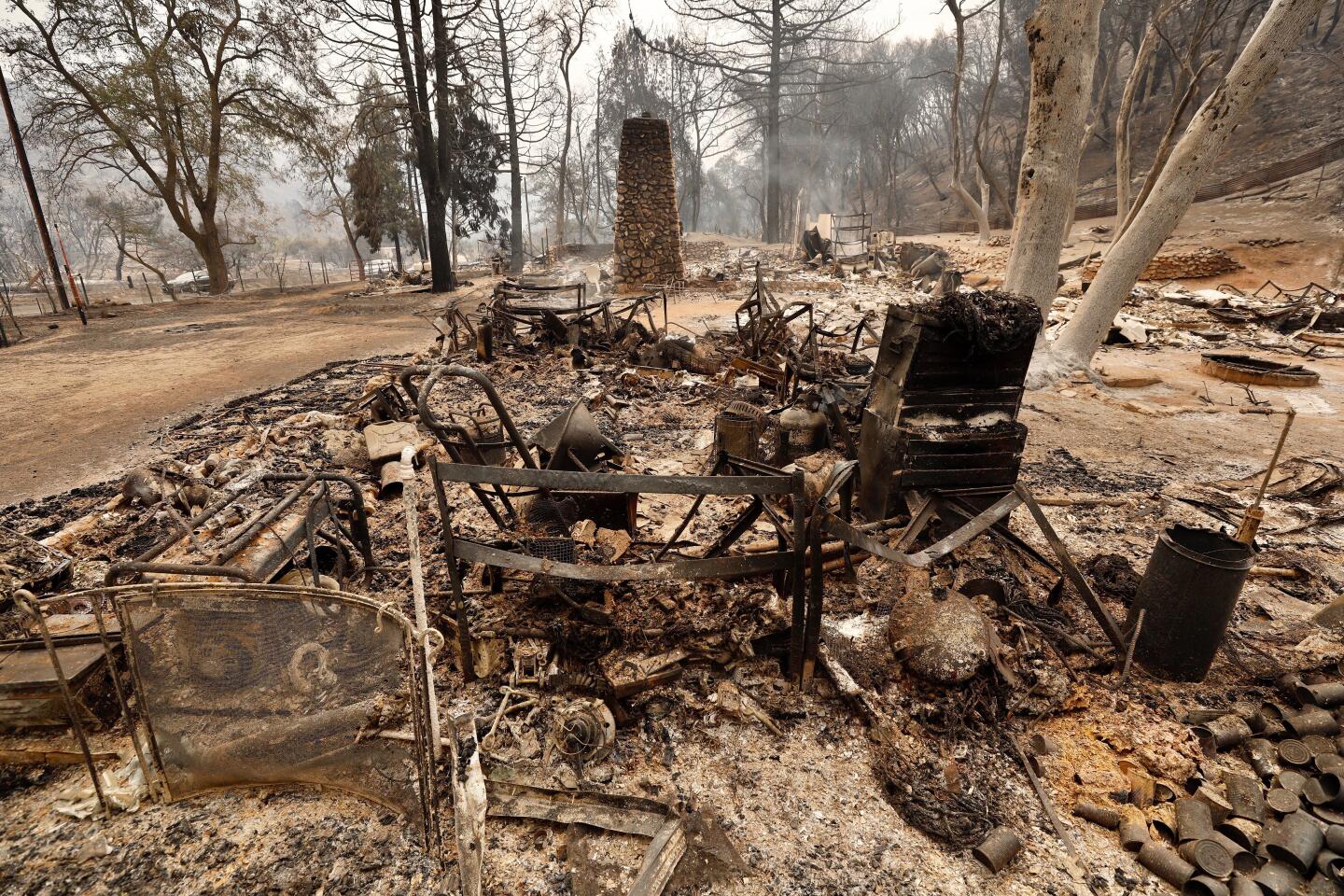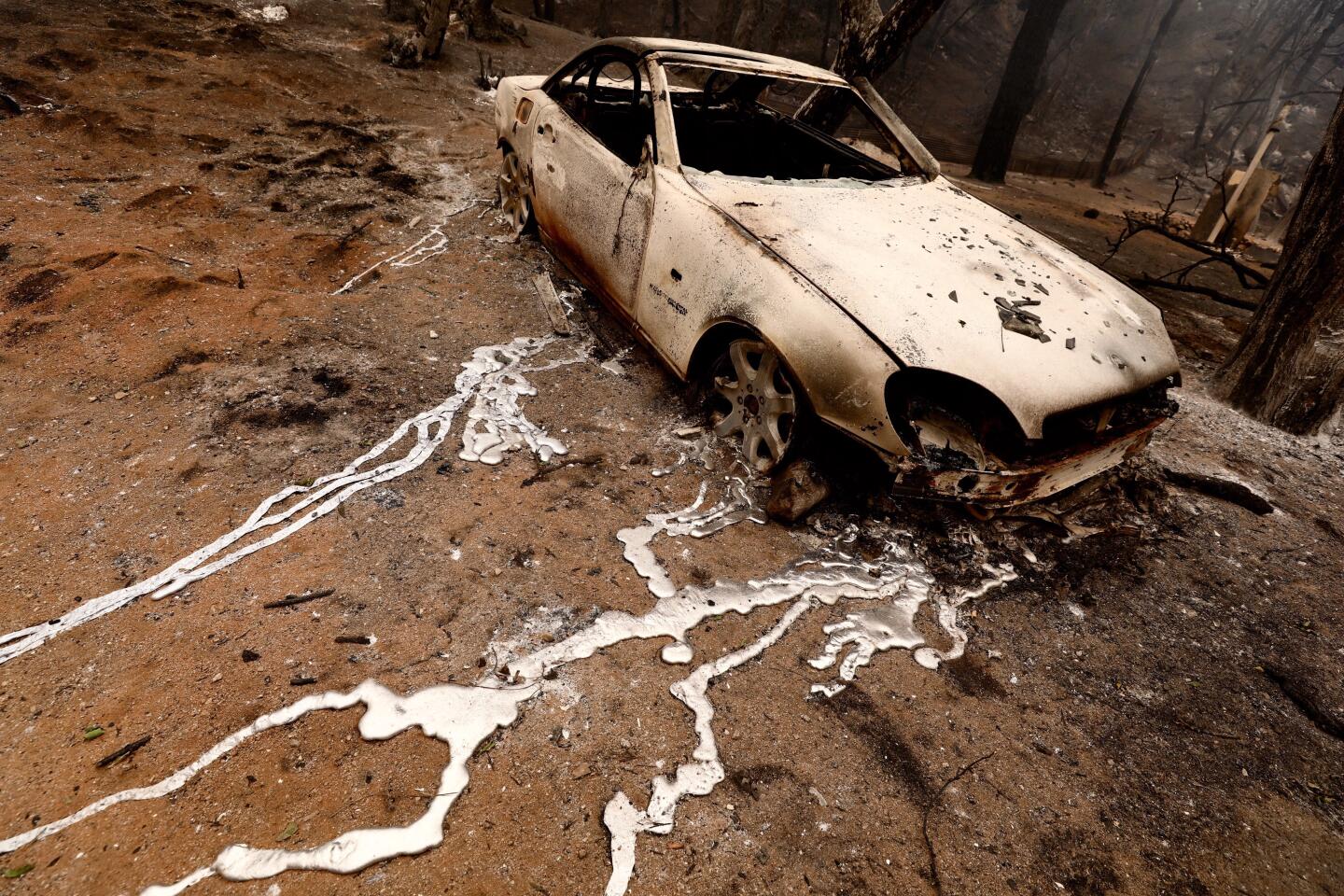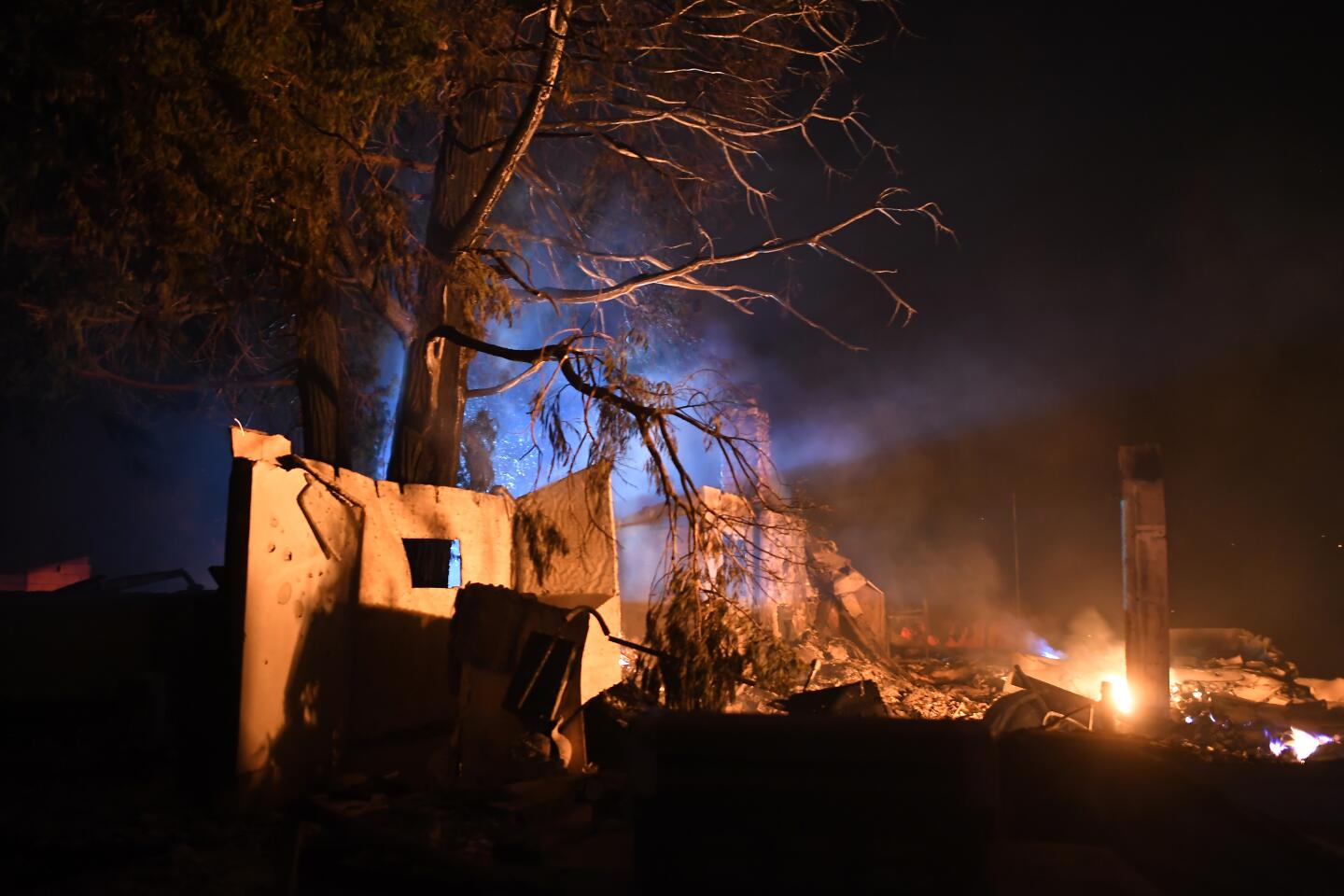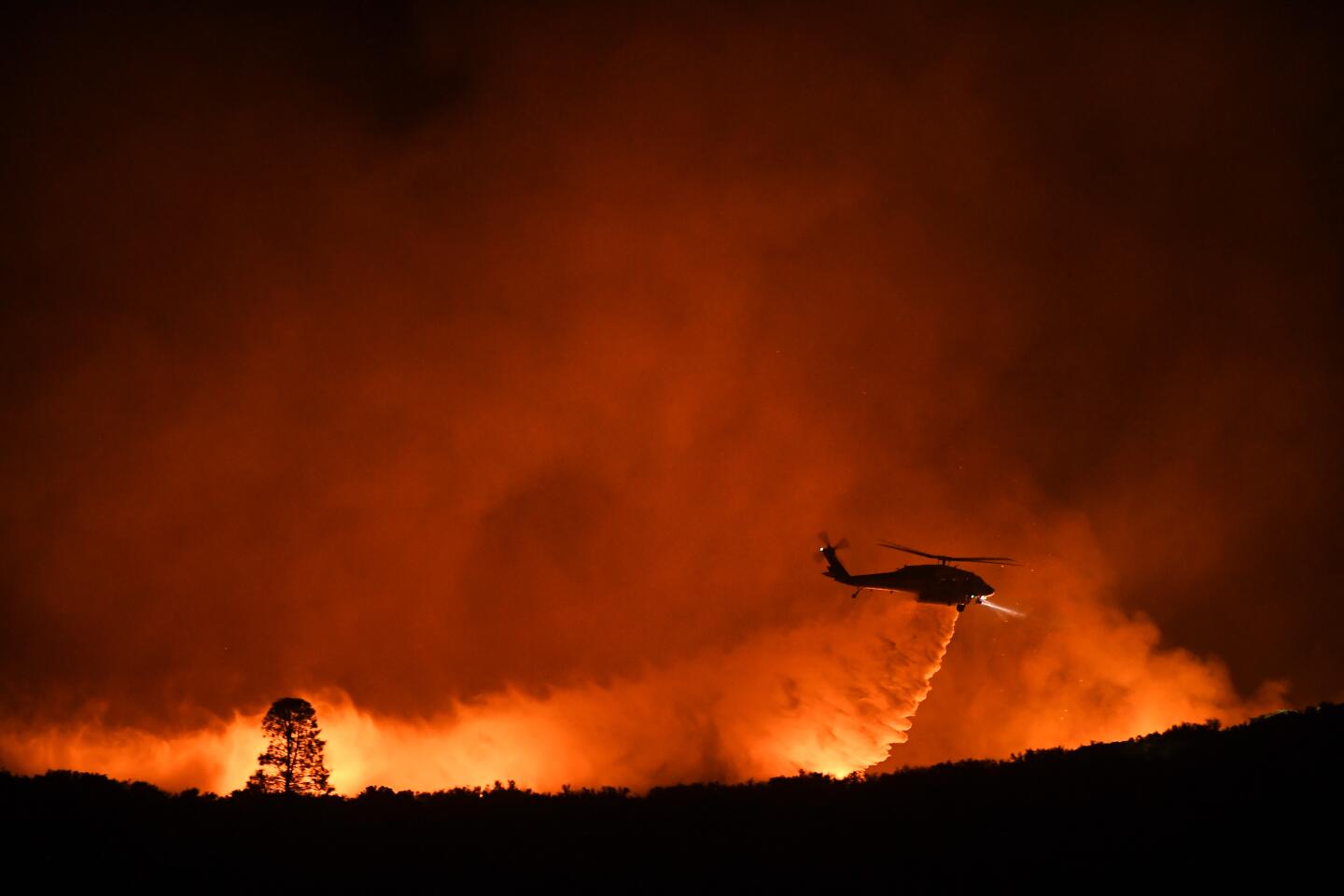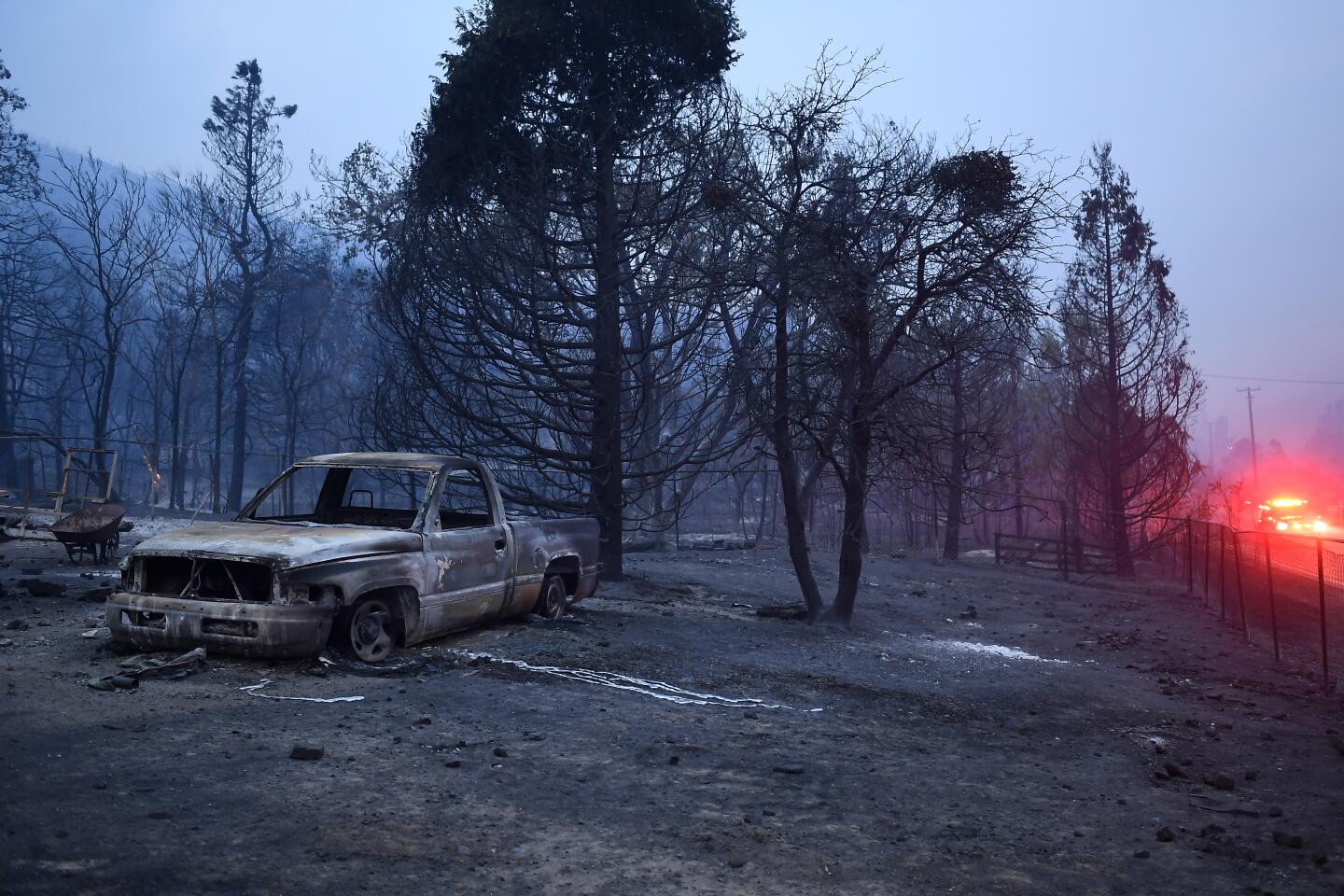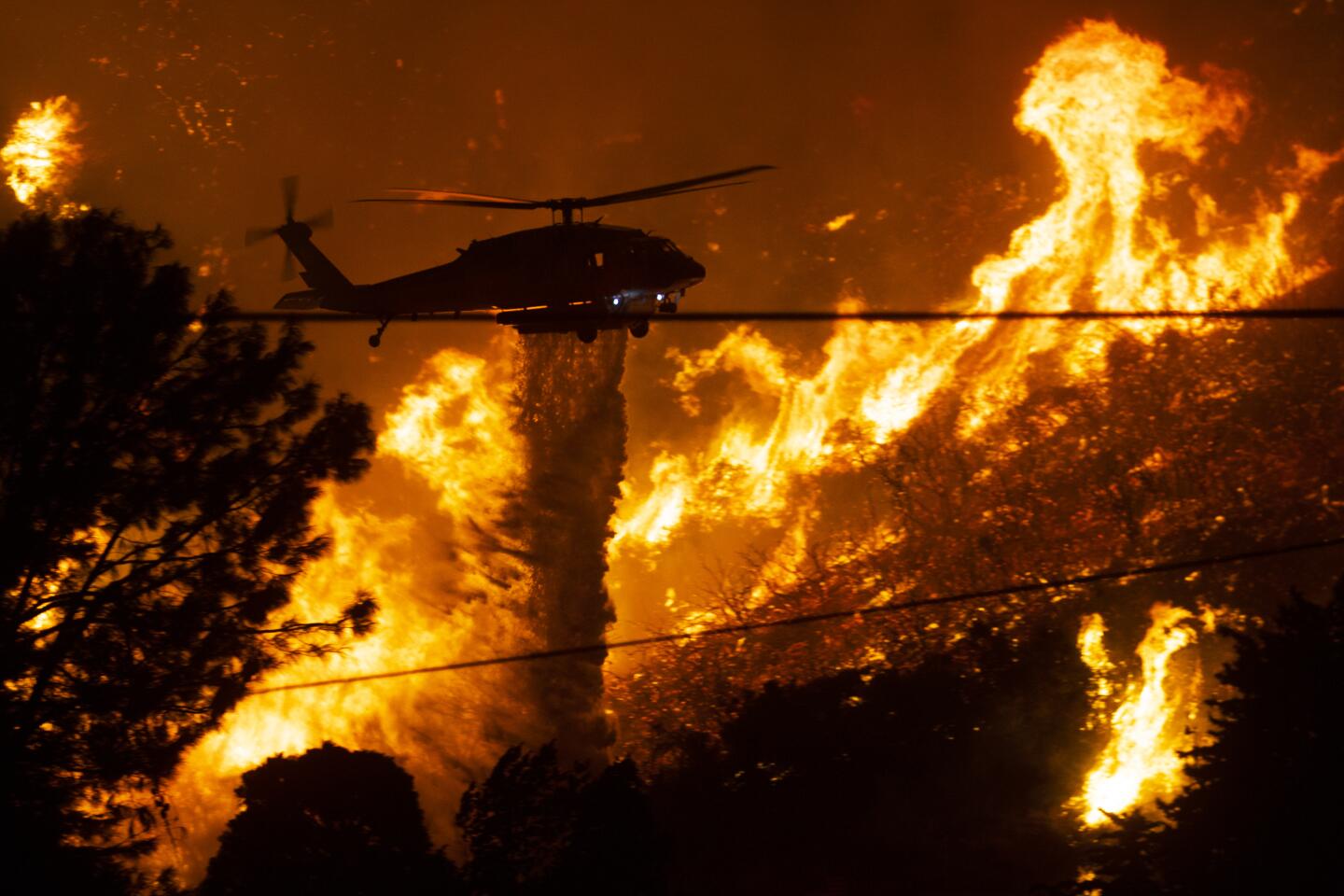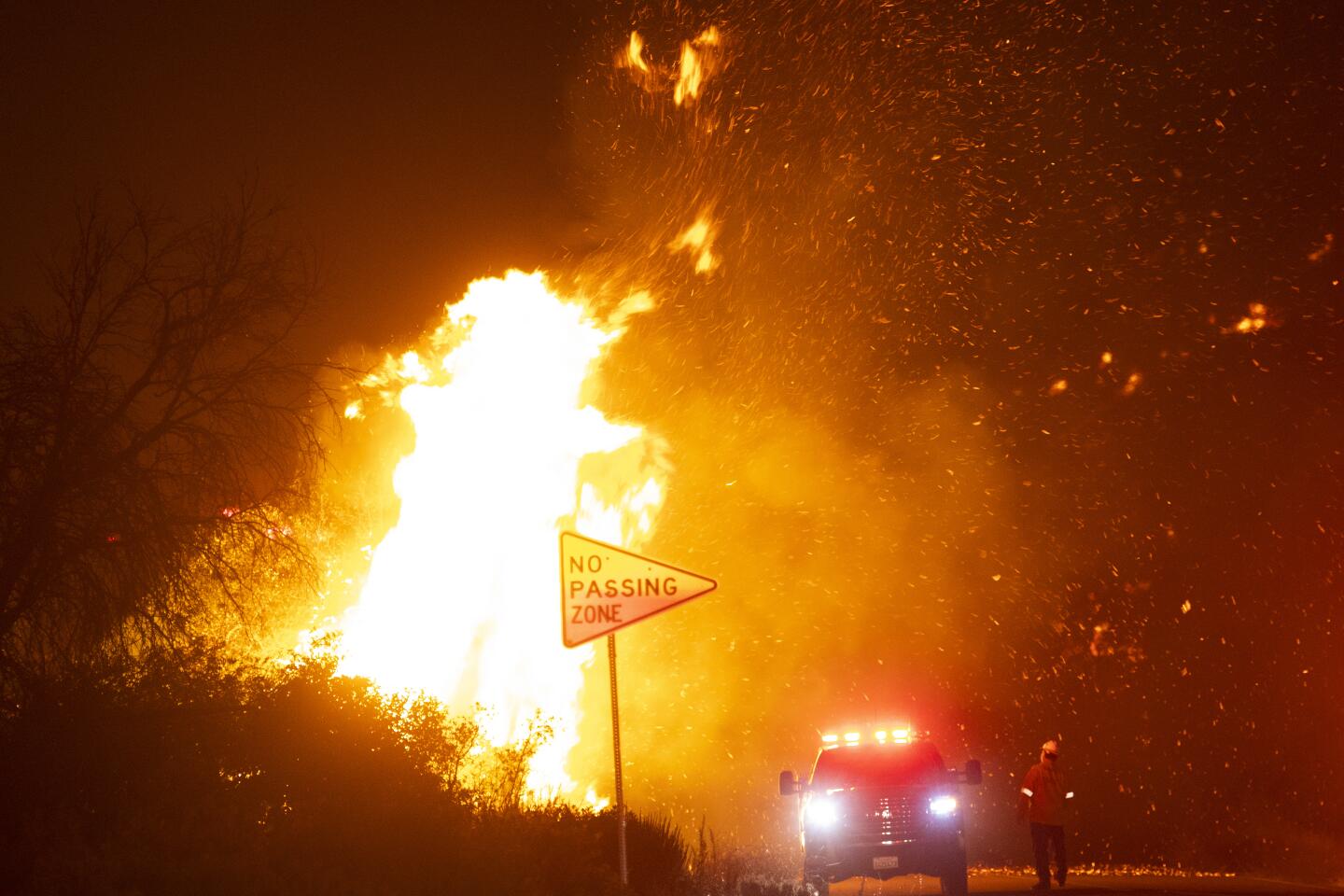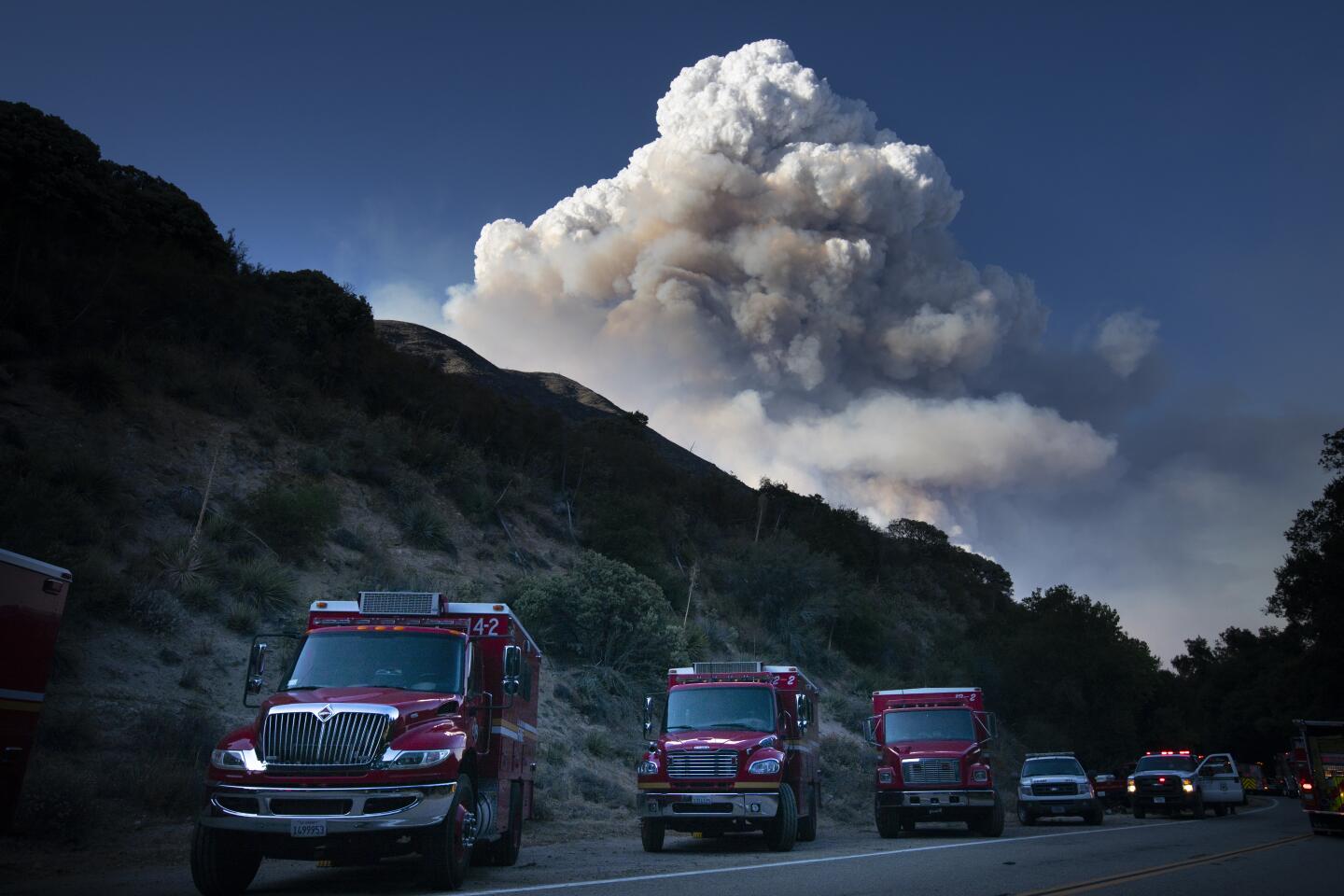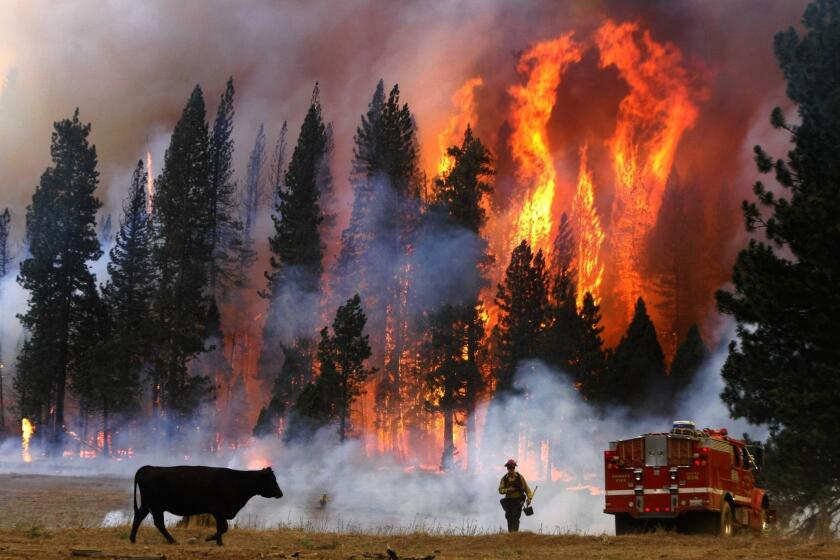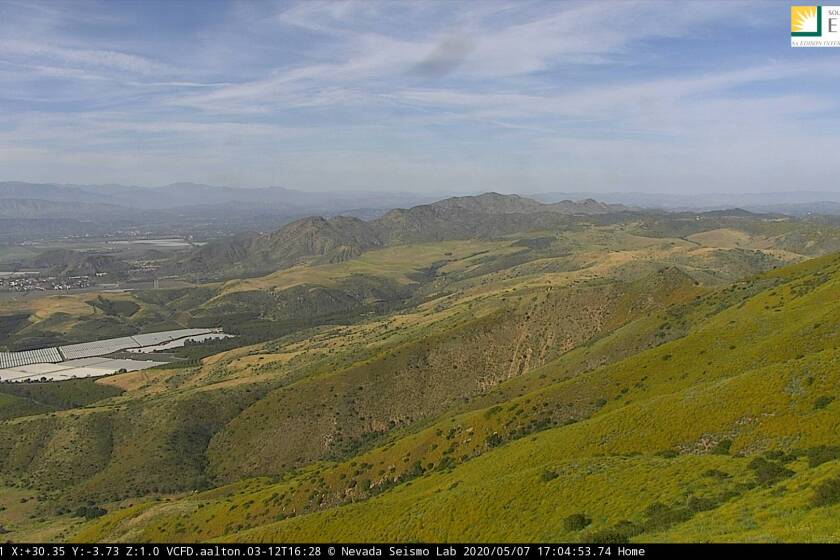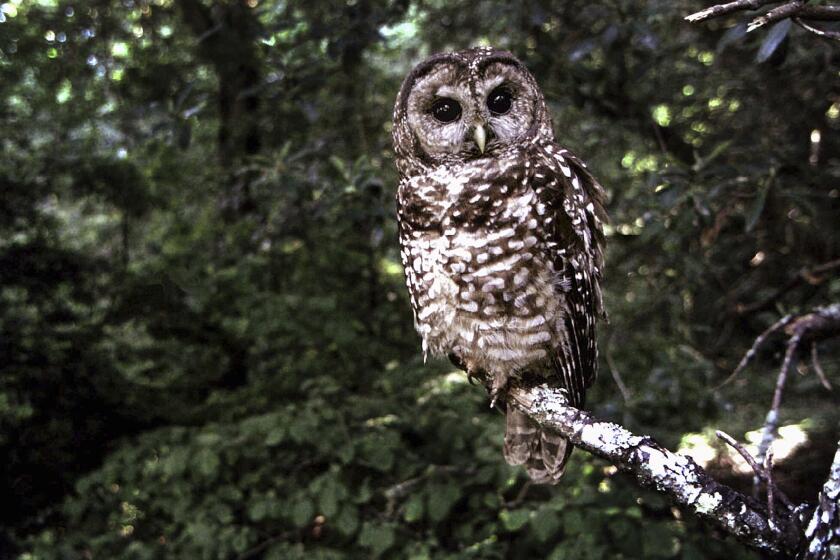Lake fire raises concern as wildfire season heats up
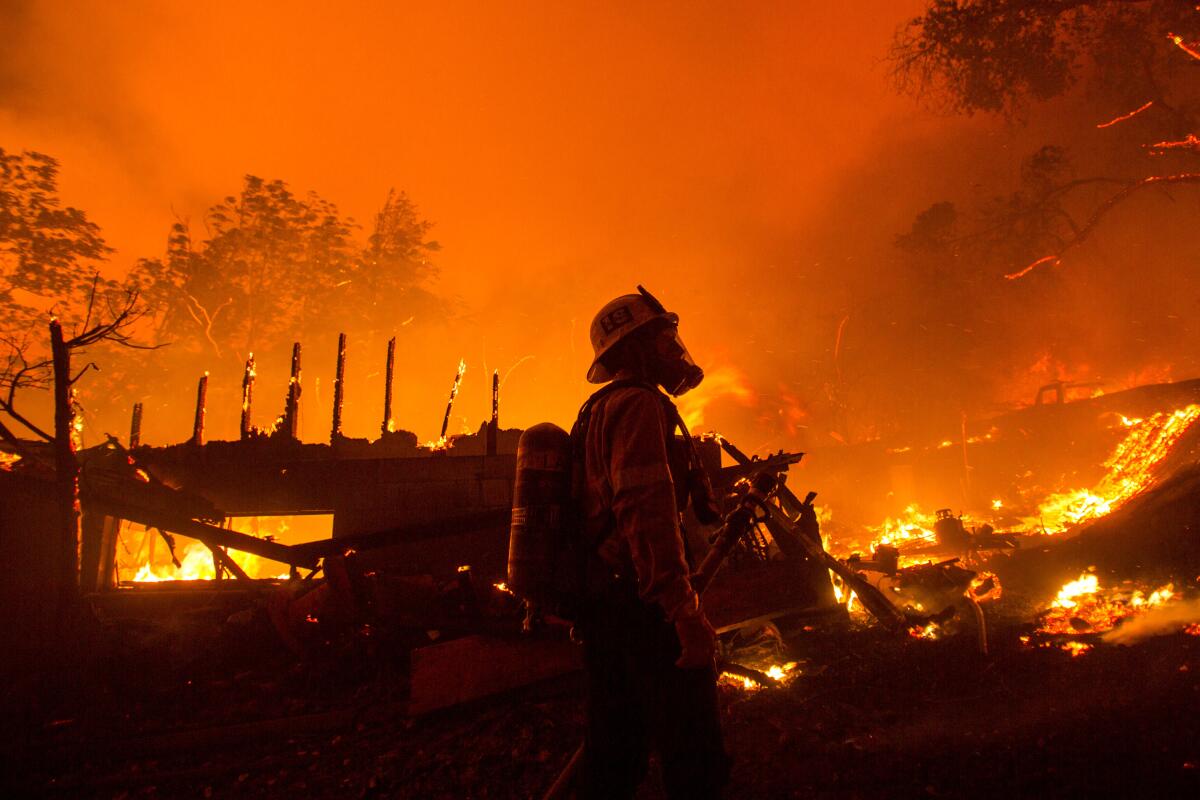
- Share via
A pillar of smoke and ash rose into the sky over Lake Hughes like an erupting volcano. Firefighters hustled to save nearby structures as flames swirled and feasted on dry brush and timber.
If the explosive blaze that crews battled in the the Angeles National Forest on Wednesday night is any indication, officials say Southern California has entered a new chapter of the 2020 fire season.
“We’re getting to the most critical part ... after a long, hot, dry summer,” Los Angeles County Fire Chief Darrell Osby said Thursday.
Vegetation that was soaked by a series of storms in late spring has finally dried and is now prone to ignition, authorities say. What comes next are the searing Santa Ana winds of the fall.
On Wednesday afternoon, the Lake fire quickly scorched 10,500 acres as it raced west toward Interstate 5 and northeast toward residents in Pine Canyon in the Antelope Valley, triggering evacuations and burning three buildings.
Though the fire’s western flank stalled upon hitting a burn scar from the 2013 Powerhouse fire, another section grew ferociously when it reached ground that hadn’t been visited by a blaze in nearly a century. Flames were 100 feet long in some areas, officials said.
“Where there’s a ton of fuel, that’s where you’ll see the big, giant flames like you saw yesterday, and that’s what’s really conducive to rapid fire growth,” said Jake Miller, an L.A. County Fire spokesman.
As California’s wildfire season approaches, authorities are worried about their ability to muster a healthy firefighter force amid coronavirus crisis.
The blaze was particularly notable because it had became “plume dominated” — firefighter-speak for fires that produce their own weather conditions. A light ocean breeze during the day injected just enough moisture into the air that it made the atmosphere in the area unstable, encouraging the smoke and soot to float up and form a towering pyrocumulus cloud that was seen for miles.
“Sometimes when you have those types of conditions, you can have a fire going in all kinds of directions depending on the behavior of the plume,” Osby said. “I’ve never seen it, but there’s been instances where it creates its own thunderstorms, lightning strikes or fire tornadoes.”
The smoke plume essentially acts like a vacuum in the sky, sucking in oxygen from the surrounding area, creating wind and lowering the air pressure as heat pushes the soot and ash tens of thousands of feet up.
“An impressive and terrifying example of extreme fire behavior, when the fire is so hot it creates rotation, along with very strong updrafts and pyrocumulus,” the National Weather Service tweeted.
In Wednesday’s case, the fire went plume-dominated in rugged terrain marked by steep canyons that funneled the winds and accelerated the fire’s movement even more.
Though conditions gave firefighters a break on Thursday, with cloud cover slowing the fire’s growth, a heat wave expected to hit the region over the weekend could bring triple-digit temperatures to the Antelope Valley and pave the way for a repeat of Wednesday’s extreme fire behavior, said UCLA climate scientist Daniel Swain.
Stuck at home because of the coronavirus? Maybe you can help spot a wildfire.
As crews continued to battle the blaze Thursday — containment remains at 0% — fires also broke out in West Covina and Azusa, triggering more evacuations.
The worse-than-average fire season for Southern California that forecasters predicted in the spring, when late-season rains created another layer of grass, appears to be upon us, Swain said. In another month or so, the onshore winds will reverse, the Santa Ana winds will arrive and everything will dry out even more.
“Even though it hasn’t been a particularly hot summer, there is an expectation that the second half will be worse because the game changes a bit,” Swain said.
Add the coronavirus outbreak into the mix, and the 2020 fire season will be especially challenging. Evacuation procedures for residents by the Red Cross are different, and how firefighters set up camp is different. At the 33,424-acre Apple fire in Riverside County, for example, residents were directed to local hotels while firefighters camped in smaller groups than usual. Osby said it’s unclear how much firefighters from other agencies will be willing to send help.
“With the economy the way it is with local governments, we’re not exactly sure everyone can participate with mutual aid without some mechanism for reimbursement,” he said.
To that end, firefighting officials at the local, state and federal levels have all called for an extremely aggressive approach to battling wildfires in 2020 to limit the need for evacuations and fire crews gathering in one place.
But there are limited options when the Santa Ana winds arrive in October.
“Those are scary to us because we can’t impact Mother Nature,” Osby said. “When she’s blowing ... and the fuels are naturally designed to burn, it’s up to our citizens to really cooperate with us ... to prevent a fire, and if there is one, to dial 911 and to evacuate.
“We’ve been fortunate we haven’t had a significant loss of life,” the chief added. “But it’s concerning to me it will happen.”
More to Read
Sign up for Essential California
The most important California stories and recommendations in your inbox every morning.
You may occasionally receive promotional content from the Los Angeles Times.
